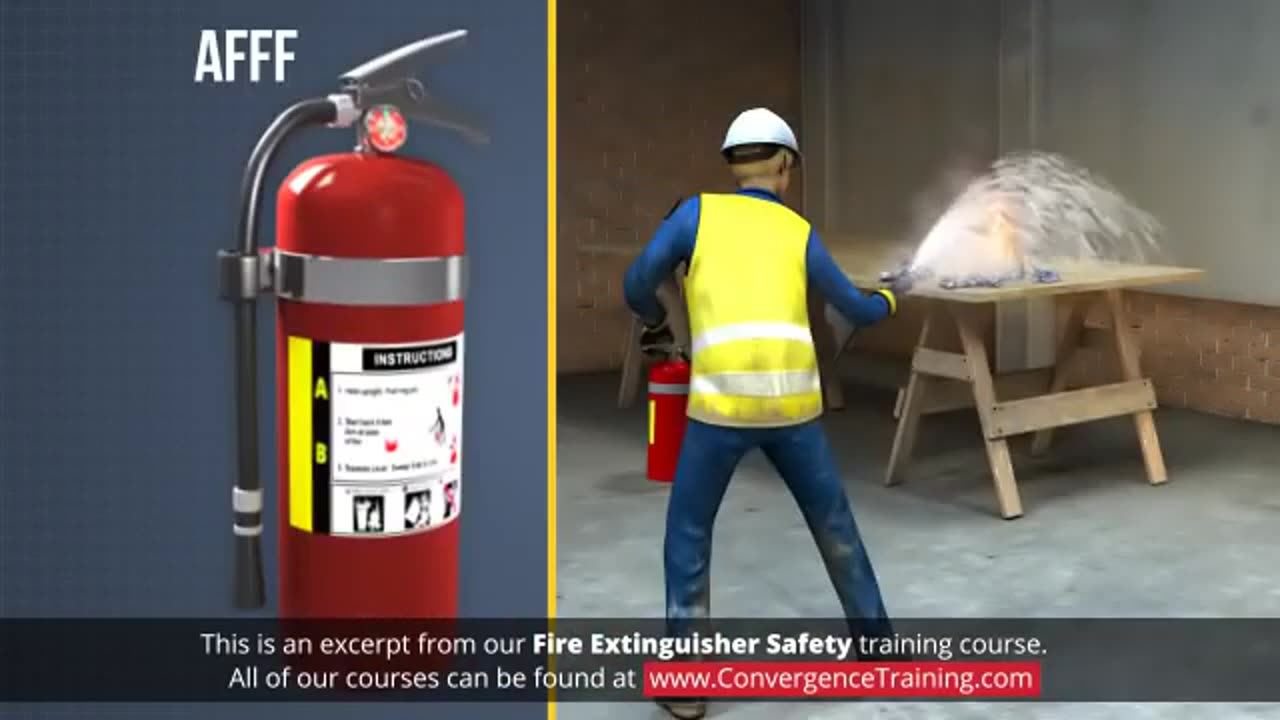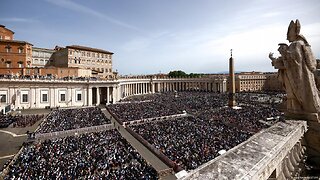Premium Only Content

Fire Extinguisher Safety for Canada
### **Fire Extinguisher Safety for Canada**
Fire extinguishers are essential safety devices in workplaces and homes across Canada. Knowing how to properly use and maintain fire extinguishers can help prevent the spread of fire and minimize damage. Canada's fire extinguisher safety guidelines are regulated under **Occupational Health and Safety (OHS) Regulations** at both the federal and provincial levels, and are informed by standards such as the **National Fire Code of Canada (NFCC)** and the **Canadian Standards Association (CSA)**. These guidelines aim to protect workers and the public by ensuring that fire extinguishers are accessible, properly maintained, and used effectively in emergencies.
Here’s a comprehensive guide to fire extinguisher safety in Canada:
---
### **1. Types of Fire Extinguishers**
Fire extinguishers are classified based on the type of fire they are designed to extinguish. It’s important to choose the correct type of fire extinguisher based on the materials that may catch fire in your environment.
#### **Classes of Fires**:
1. **Class A**: Fires involving ordinary combustibles such as wood, paper, and cloth.
2. **Class B**: Fires involving flammable liquids, gases, or greases (e.g., gasoline, oils).
3. **Class C**: Fires involving energized electrical equipment (e.g., appliances, wiring).
4. **Class D**: Fires involving combustible metals (e.g., magnesium, titanium).
5. **Class K**: Fires involving cooking oils and fats (e.g., deep fryers).
#### **Types of Fire Extinguishers**:
- **Water** (Class A fires)
- **Foam** (Class A and B fires)
- **Dry Chemical Powder** (Class A, B, C, and D fires)
- **Carbon Dioxide (CO2)** (Class B and C fires)
- **Wet Chemical** (Class K fires)
Each type of extinguisher should be used only for the specific class of fire it is rated for. For example, using a water-based extinguisher on an electrical fire (Class C) is dangerous and could lead to electrocution.
---
### **2. Fire Extinguisher Inspection and Maintenance**
#### **Regulatory Requirements**
In Canada, fire extinguishers must be regularly inspected and maintained according to **provincial and federal OHS regulations**, which are aligned with **National Fire Protection Association (NFPA)** standards. The maintenance is typically performed by a certified technician or contractor.
#### **Inspection Steps**
- **Visual Inspection**: Check that the fire extinguisher is easily accessible, properly mounted, and clearly visible. Ensure that the pressure gauge (if present) indicates the extinguisher is in the green zone.
- **Condition of the Extinguisher**: Check for any signs of damage, corrosion, or leaks. The nozzle or hose should be clear of obstructions.
- **Labels and Instructions**: Ensure that the extinguisher has the proper labels and instructions, and that they are legible.
- **Weight Check**: For extinguishers with a weight-based charge, ensure the weight is correct by checking the manufacturer’s instructions.
- **Seals and Pins**: Ensure the safety pin and tamper seals are intact, and the operating mechanism is free from obstruction.
#### **Service and Recharging**
- Fire extinguishers should be recharged after each use, even if they haven’t been fully discharged.
- **Pressure Testing**: For certain types of extinguishers, such as CO2 extinguishers, the pressure should be tested every 5 to 12 years, depending on the type.
---
### **3. Fire Extinguisher Placement and Accessibility**
#### **Location**
- Fire extinguishers should be placed in easily accessible locations, such as near exit doors, in hallways, and close to high-risk areas (e.g., kitchens, workshops).
- They should be installed in a way that they are visible, with the top of the extinguisher no higher than 5 feet from the floor for easy access.
#### **Clear Signage**
- Ensure that the location of fire extinguishers is clearly marked with appropriate signage that meets CSA or NFPA standards.
#### **Proper Quantity**
- The number of extinguishers needed depends on the size and layout of the building. A minimum of one fire extinguisher should be placed on every floor, and additional extinguishers should be provided for high-risk areas.
---
### **4. How to Use a Fire Extinguisher: The PASS Method**
In case of a fire, it’s important to know how to use a fire extinguisher effectively. The **PASS** method is an easy-to-remember technique for using a fire extinguisher:
1. **Pull** the safety pin from the handle of the extinguisher. This will break the tamper seal.
2. **Aim** the nozzle at the base of the fire, not at the flames. Targeting the base of the fire is essential for extinguishing it effectively.
3. **Squeeze** the handle to discharge the extinguisher’s contents.
4. **Sweep** the nozzle from side to side, moving across the base of the fire until it is fully extinguished.
#### **Important Considerations**
- **Evacuate If Necessary**: If the fire is too large or spreads too quickly, do not attempt to extinguish it. Evacuate immediately and call emergency services.
- **Maintain Safe Distance**: Keep a safe distance of about 6 to 8 feet from the fire when using the extinguisher.
- **Stay Low**: In case of smoke, stay low to avoid inhaling toxic fumes.
---
### **5. Employee Training**
#### **Training Requirements**
- All employees should be trained in **fire extinguisher usage** and **fire safety procedures**. This includes:
- Recognizing the different classes of fires.
- Knowing where fire extinguishers are located.
- Understanding how to use the appropriate fire extinguisher.
- Being familiar with evacuation procedures in case of a larger fire.
Training should be conducted regularly, and employees should have the opportunity to practice using a fire extinguisher under supervision, using a simulated fire (such as a **live fire training** or **virtual reality training**).
#### **Fire Drills**
- **Regular Fire Drills** should be conducted to ensure that employees know how to respond in case of a fire emergency. These drills should include:
- Evacuation procedures.
- The use of fire extinguishers.
- Emergency exit routes.
---
### **6. Fire Extinguisher Safety in Special Areas**
#### **Kitchen and Cooking Areas**
In workplaces with kitchen or cooking equipment (e.g., restaurants), **Class K** fire extinguishers are required to handle fires involving cooking oils and fats.
#### **Electrical Equipment**
For areas with electrical equipment, **Class C** fire extinguishers (typically CO2 or dry chemical) should be used. It is essential that the electrical power is turned off before attempting to extinguish an electrical fire if safe to do so.
---
### **7. Legal Requirements and Compliance**
Employers are required to comply with **fire safety regulations** outlined in:
- The **Canada Labour Code** (for federal workplaces).
- Provincial/territorial **Occupational Health and Safety Acts**.
- **Fire Safety Codes**: These codes outline the requirements for fire extinguisher placement, maintenance, and employee training.
Failure to comply with these regulations can result in fines, penalties, and, most importantly, workplace injuries or fatalities.
---
### **Conclusion: Fire Extinguisher Safety in Canada**
Fire extinguisher safety is a critical aspect of overall workplace safety in Canada. Proper training, regular inspections, and appropriate placement of fire extinguishers can significantly reduce the risks associated with workplace fires. By following national and provincial safety guidelines, employers can ensure that workers are prepared to effectively handle fire emergencies.
-
 6:54
6:54
HSESafetyInformation
2 months ago6 Must Try Breakfast recipes By Food Fusion
341 -
 LIVE
LIVE
megimu32
2 hours agoON THE SUBJECT: Mixtapes, Mosh Pits & Mistakes: How 90s Rock Raised Us
268 watching -
 58:57
58:57
Donald Trump Jr.
4 hours agoAmerica First, Always. Interviews with Ned Ryun & Kenny Cody | TRIGGERED Ep.235
104K63 -
 52:11
52:11
BonginoReport
4 hours agoDHS Sec Noem ROBBED By Masked Man on Easter - Nightly Scroll w/ Hayley Caronia (Ep.31)
65.7K59 -
 1:13:46
1:13:46
Kim Iversen
5 hours agoKlaus Schwab Steps Down—But the WEF Agenda Marches On
67.7K81 -
 1:24:34
1:24:34
vivafrei
6 hours agoVan Hollen's Tax-Payer Funded Vacay! Canada Liberals are Absolutely INSANE! Hegseth Hit Piece & MORE
80.7K27 -
 55:55
55:55
LFA TV
1 day agoEurope’s Religious Revival | TRUMPET DAILY 4.21.25 7PM
21.2K -
 LIVE
LIVE
Quite Frankly
7 hours ago"Death of Pope Francis, Klaus Retires, Easter Review" 4/21/25
1,050 watching -
 1:38:50
1:38:50
2 MIKES LIVE
3 hours ago2 MIKES LIVE #208 Deep Dive Monday!
17.3K1 -
 29:31
29:31
Kimberly Guilfoyle
5 hours agoThe Great American Comeback, Live with Nick Adams | Ep215
69.8K15